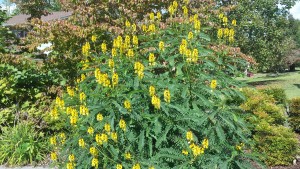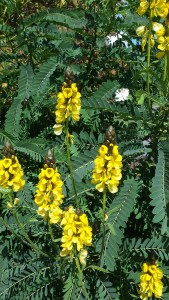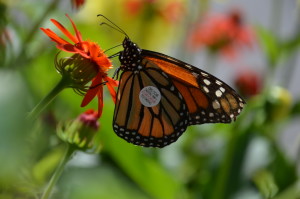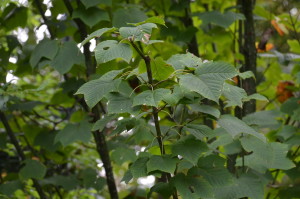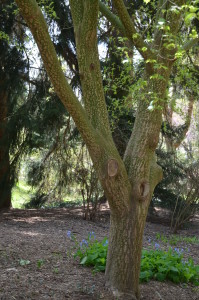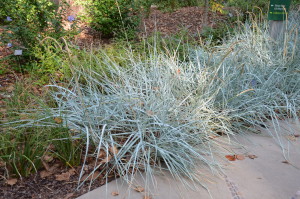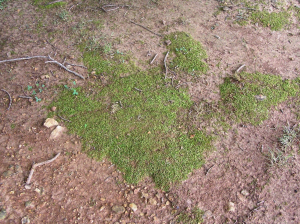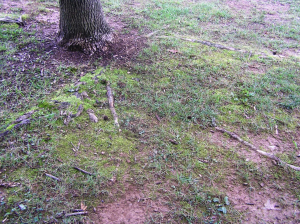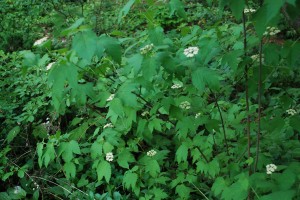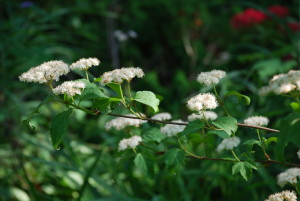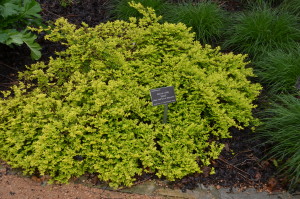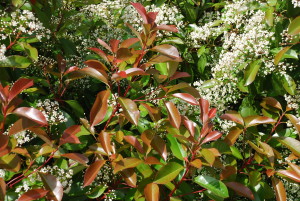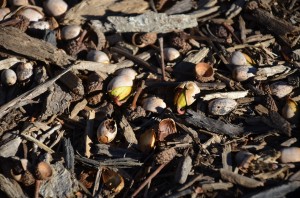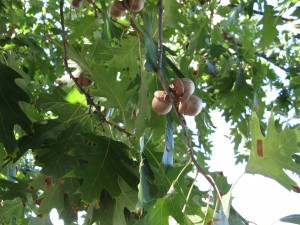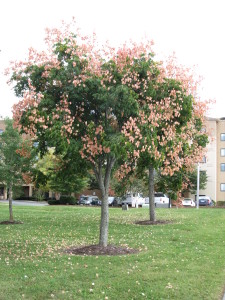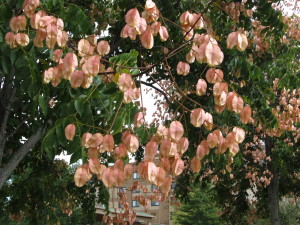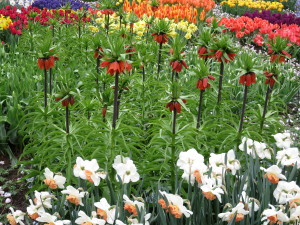Big and bold is this tropical annual (USDA hardiness zones 9-11), known by several names including popcorn or peanut butter cassia (Senna didymotrya), formerly Cassia didymotrya. Popcorn plant is a legume family (Fabaceae), indigenous to tropical Africa. It is also been utilized as a cover crop or green manure crop in some areas of the world. It thrives where summers are long, hot and humid in the U.S.
Popcorn cassia grows 6-12 feet tall in temperate climates by the end of summer. In zone 6 (northeast Tennessee), expect 6 -7 feet. Direct seed into the garden in early May after danger of frost has passed. Growth rate ramps up as outdoor temps rise.
Popcorn cassia blooms from late spring into early fall and is often utilized as a garden accent plant for its tall flower spikes and lush tropical foliage. Bloom buds are jet black and pop open with showy yellow flowers. Each pinnately compound leaf may grow to 18 inches long, arranged in pairs of oval 8-18 leaflets that are up to 3 inches long. Plant(s) set in large containers grow a lot smaller and flower less.
Flower spikes may stand up to one foot tall. Each flower is ½ to 2 inches wide with showy prominent stamens. Opinions about floral fragrance can be quite subjective. Some say that the flowers smell like peanut butter. Flat 3-5 inch long brown pods form after flowering. Each may contain up to 16 shiny flat bean-like seeds.
Popcorn cassia grows best in full sun and in moist, well-drained soil. By mid-summer, plant is highly drought tolerant. Otherwise, irrigate and fertilize regularly to push growth and flowering. Use a liquid fertilizer such as Miracle-Gro™ or Daniels™.
Prune to keep plant more compact, but flower numbers will be less. Plant has no significant disease or pest problems and generally is not troubled by deer.
In late winter start new plants indoors from seed collected last fall. Pre-soak seed in water for 24 hours prior to sowing to improve germination.
Glenna Schaefer, garden expert at Kingwood Center in Mansfield, Ohio, tells me that two species, Senna hebecarpa and S. marilandica, are native to Eastern North America and are quite hardy there (zone 5).

